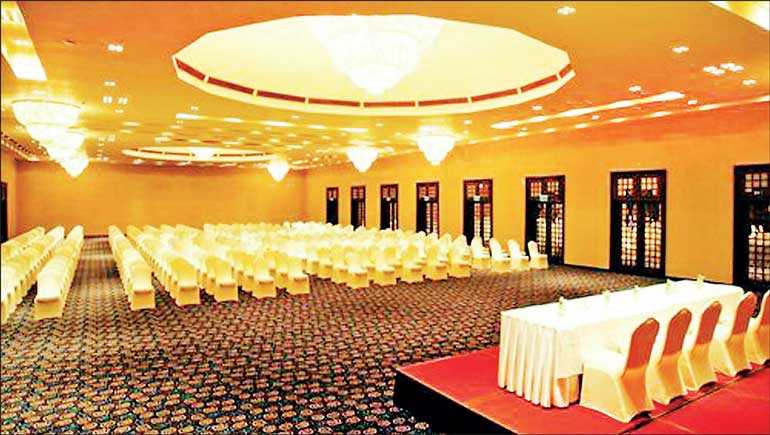Friday Dec 05, 2025
Friday Dec 05, 2025
Wednesday, 27 March 2019 00:00 - - {{hitsCtrl.values.hits}}

Whilst Sri Lanka continues to show a year-on-year growth in tourists, the focus thus far has only been on the number of tourists coming in, instead of the cash inflow and subsequent economic development. As of 2018, the  local tourism sector is said to contribute 12% to the annual national GDP (Gross Domestic Product) of the country. With an industry value of $4 billion, Sri Lanka is amongst the top 22 nations showing the fastest growth in today’s global economy. This should not however, deter Sri Lanka from having a tourism and infrastructure strategy for economic prosperity.
local tourism sector is said to contribute 12% to the annual national GDP (Gross Domestic Product) of the country. With an industry value of $4 billion, Sri Lanka is amongst the top 22 nations showing the fastest growth in today’s global economy. This should not however, deter Sri Lanka from having a tourism and infrastructure strategy for economic prosperity.
Strategic planning; venturing down the angle of MICE tourism
MICE, an acronym for Meetings, Incentives, Conferences and Exhibitions is one of the fastest growing areas in the tourism industry, with the global MICE industry currently valued at $270 billion and accounts to about 1% of the global GDP. Sri Lanka will benefit from adopting a MICE-centric tourism approach as the country can offer the perfect balance between professional and leisure-based locations.
The development of the MICE sector in Sri Lanka is necessary for both economic contribution and to reduce limitations as it helps mitigate the seasonal nature of a destination.As most meetings and events are held during the months with either no or less holidays and is programmed midweek, this allows the events segment to perfectly complement the leisure segment. With well planned development of hotels in and around cultural heritage sites, domestic carriers and other infrastructure development, professionals coming into the country can spend the designated conference related days in the city and have a relaxing vacation afterwards.
Sri Lanka has already begun infrastructural development to accommodate MICE tourism, with the upcoming megalopolis project. In addition, this events segment can perfectly complement the leisure segment and help provide a more frequent flow of activity, permitting the creation of more jobs and more stable work contracts.
To attract the right kind of tourists, the Government must prepare to demonstrate our country’s strengths as a host for professional and recreational activities at trade fares. With the growth of the US Dollar, some of the potential markets to focus on are China, India and Japan as Sri Lanka already has a flow of visitors from these countries. Albeit, they are low income, low spending clients, but the prospective market segment of high income, high spending tourists can be attracted through strategic planning.
The need for a more diverse and inclusive workforce
In addition to the need of a MICE tourism centred strategy, Sri Lanka must also focus on the workforce in the industry. Out of the total workforce, the female labour force in the tourism sector is said to comprise of less than 10% where the global average stands at 65%, showing that Sri Lanka also need to focus on diversity and inclusion in the industry.
A few simple steps to get started with the inclusion of more females, is to enable flexible working hours, provide transportation, safe accommodation and a friendly and open working environment. Flexible working hours is no longer considered a luxury reserved for the higher management or a western-lead organisation. It is important for the country to recognise and address that times are changing, and with these changing of times its necessary to adapt to the changing patterns of human needs and behaviour.
There is a social stigma amongst local mothers preventing more females from joining the hotel industry. This too much change and parents must be educated to allow their daughters to join the tourism sector as this is a reputed industry sector to work in.
Developing local mindsets and infrastructure
To keep up with the inflow of tourists, Sri Lanka needs at least 100,000 more employees within the next three years. Yet we only train around 10,000 every year. The need for investments in more training and development programs are high and it’s time the Government began encouraging the young generation to learn Asian languages, and perhaps even include this learning as part of the local education curriculum to foster this mindset amongst the future generation.
In addition, there should be a strategic plan around developing the tourism industry and supporting infrastructure. The megalopolis project is a step forward and if executed well, will have Sri Lanka reap the benefits of attracting high spending tourists who view the nation as an exotic and exclusive vacation destination, instead of seeing the country as a low spending, backpacking destination.
The Government should begin focusing on the yield per night and the number of beds occupied to measure the real income coming into the country. Another great way to attract high spending tourists is to develop more infrastructure around cultural heritage sites, including roads, railways and sea planes, attractive tourism packages and hotel accommodations with more facilities so that a guest travelling from Yala to Anuradhapura would be able to cut short the long drive and make a quick flight instead.
In closing, the Government of Sri Lanka can implement the education curriculum and vocational training programs to teach younger generation more Asian languages as this will be useful and attractive to help accommodate Asian guests as well as promote more gender parity in the industry. Through this, the Government can develop a new workforce, who can act as tour guides and chauffeur guides for foreign travellers, as other western nations are already building a new workforce by training the country’s less fortunate to become tour guides in the city, bringing in a new method of economic growth.
(The writer is an accountant by profession turned Head of Operations. He possesses over 30 years of expertise in the hospitality industry including 20 years of strong financial administration at five-star hotels. His expertise is spread throughout his various stints in various regions around the world including USA, The Caribbean, Middle East and Singapore as well as holding the position of an operation and commercial oriented Director of Finance, with a wealth of business experience. He is a highly result oriented professional, who believes in cohesive work environments and team work. He is now retired and consults professionally to a leading international consulting firm, whilst residing in his home in Colombo. You can contact him on [email protected].)